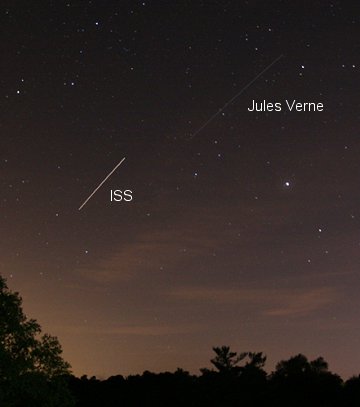| NEW SUNSPOT: A new sunspot is emerging in the sun's northern hemisphere. After several months of almost-relentlessly blank suns, "this is like a breath of fresh plasma," says photographer Pete Lawrence who sends this picture from Selsey, UK. The magnetic polarity of the emerging spot identifies it as a member of new Sunspot Cycle 24. more images: from N. Hebert et al. of South Portland, Maine; from Didier Favre of Brétigny sur Orge, France; from Robert Arnold of Isle of Skye, Scotland; from Adrian Guzman of San Jose, California; LAST SUNRISE OF SUMMER: "Good-bye summer," says Saeid Aghaei. "This morning I photographed the last sunrise of summer 2008 here in Neyshabur, Iran." 
And with the end of summer comes the beginning of autumn. The northern autumnal equinox takes place today, Monday, Sept. 22nd, at 15:44 UT (11:44 a.m. EDT) when the sun crosses the celestial equator heading south for the year. Autumn begins in the northern hemisphere, and spring in the southern hemisphere. Happy equinox! more images: from Aymen Ibrahem at The Plateau of Giza, Egypt SIGHTINGS: "Last night, I watched as the International Space Station (ISS) chased Jules Verne across the sky," reports photographer Rick Stankiewicz of Ontario, Canada. "This sequence of images shows them rising in the west over my backyard at about 8:52 pm local time." 
"I was lucky to have caught these two spacecraft in the same field of view," he says. "Until recently they were separated in their orbits by several minutes, but now they appear to be converging and are within 30 seconds of one another. My goal was to capture a shot of the Jules Verne before it is destroyed forever on Sept. 29th when ESA mission controllers command it to re-enter Earth's atmosphere over the south Pacific Ocean." The convergence of the two spacecraft is a deliberate maneuver, putting ISS astronauts in good a position to witness Jules Verne's reentry and fiery destruction. Researchers on two NASA aircraft will be watching, too. Stay tuned for fireball pictures! Until then, you the reader may be able to see Jules Verne gliding over your own backyard with ISS in hot pursuit. Check the Satellite Tracker for viewing times. more images: from Matthew Cook of Ann Arbor, Michigan; from Phillip Chee of South Monaghan, Ontario, Canada; from Joe Ricci of Rochester, New York; from Günther Strauch of Borken, NRW, Germany; from Steve Beckle of Aurora, Illinois;
Sept. 2008 Aurora Gallery
[Aurora Alerts] [Night Sky Cameras] | 
